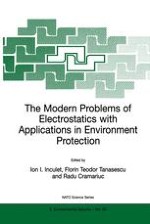Among the many technological and legal efforts being made to restore our environment, electrostatic technologies may well hold the solution to the cleaning of air, water and soil. Such technologies include non-thermal plasma processing - electron beam irradiation, electrical discharge, hybrid plasma systems. The book also contains descriptions of the industrial implementation of the technology for NOx and SO2 removal using accelerated electrons. This technique has been implemented in three plants, built in China, Poland and Japan. Water pollution can be controlled and reduced by the use of ozone and UV irradiation. Soil pollution can be reduced by electrical methods and by using electrostatics to spray agricultural pesticides. Further articles cover the future of EHD systems in environmental protection, new aspects of ESD research, and industrial waste recycling technologies.
